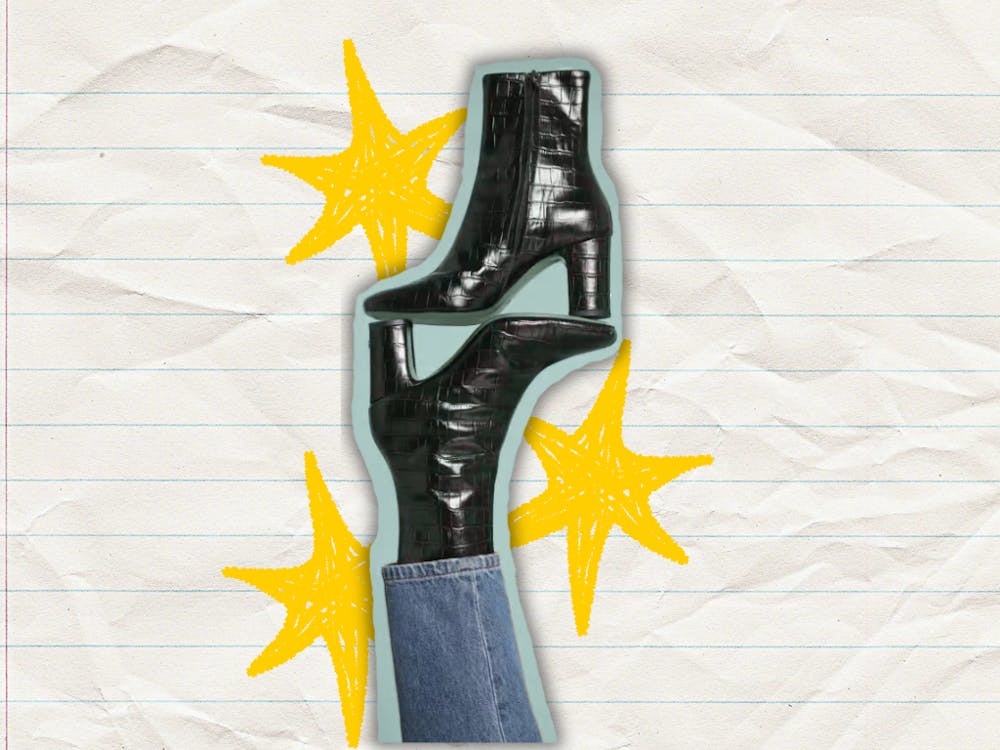A week ago, I popped a couple zits on my face. This left angry purple splotches behind.
During my Googling quest to uncover “acne scar treatments,” I realized something: we now live in a completely skincare-obsessed society. And this skincare-obsessed society often prioritizes aesthetic over the quality of products.
As someone with a decent amount of skin issues, who likes to be online but does not have thousands of dollars to throw at products and dermatologist consultations, it is exhausting.
If you use Instagram and Twitter regularly like me, then you, too, might be constantly inundated with advertisements for increasingly expensive skincare products, all claiming to be more environmentally friendly, more aesthetically appealing and less toxic than those before it.
Glossier fills all of that criteria, and the makeup and skincare company has perfected the art of millennial-targeted minimalistic marketing. Founder Emily Weiss has been crowned “the millennials’ Estée Lauder,” and when Glossier dropped its perfume in 2017, Nylon reviewed it with the headline “Thanks to Glossier, We Can Now Smell Like True Millennials.”
Their website touts their philosophy of “Beauty inspired by real life” and claims their products are “about fun and freedom and being OK with yourself today.”
But Glossier is criticized often, and for good reason. People have called out the brand for offering limited shades of foundation and concealers that don’t work for many people of color, its skincare products not being effective for people who don’t already have near-perfect skin and “selling an aesthetic” over quality products.
I, like many people, fell prey to Glossier’s difficult-to-escape (as a twentysomething woman who uses social media) marketing and have been using their products for a year. Their makeup is easy to apply, but fades quickly. Their cleanser, which purports to “remove dirt and makeup,” doesn’t. Their “Moisturizing Moon Mask” left my skin dry and flaky.
Glossier’s aesthetic is unparalleled. The brand has garnered 2.7 million Instagram followers, who watch as they post photos of glowy-skinned people in their makeup and screenshots of complimentary tweets. Their aesthetic is just that — pretty people and social media popularity, not skincare and makeup products worth their not-exactly-cheap prices (their least expensive, full-size product is $12 lip balm).
Even medically-oriented skincare products have taken on pastel-hued, Wes Anderson-esque aesthetics. Last fall, I started getting Instagram ads for Psoriasis Honey, a cruelty-free, mostly-natural skincare product.
Eczema Honey and its sister product, Psoriasis Honey, each have their own carefully curated Instagram pages. Eczema Honey’s is more popular, with nearly 200,000 followers, but both feature snaps of beaming people holding their products intermingled with inspirational Pinterest quotes, women romping through fields of flowers and people showing off radiant, dewy skin.
Eczema Honey’s page features few photos of actual eczema, or even less-than-glowing skin, and after scrolling for several minutes through Psoriasis Honey’s photos, I found no actual psoriasis.
Enjoy what you're reading?
Signup for our newsletter
As someone who has suffered from pretty bad cases of both skin conditions at different points in my life, I found this bizarre. No one wants to see raw, bleeding skin while they scroll through Instagram. But it also frustrates me to see eczema and psoriasis treated like aesthetics; having your hair fall out in clumps because your scalp is so dry isn’t aesthetically pleasing, nor is sleeping with ointment-soaked socks on because your eczema has (somehow, for some godforsaken reason) spread to your feet.
Full disclosure, I tried Psoriasis Honey, too, because it was cheaper than consulting a dermatologist. It was about as effective as prescription-strength oil I’ve used.
Glossier and Psoriasis/Eczema Honey are the only case brands I can speak for. I am also bombarded with daily ads from newer, even more aesthetically pleasing brands like Curology, Rael, Atolla, Rory, Zitsticka and more. It’s overwhelming and, as I said before, exhausting. Plus, since most of them are so new, it’s impossible to know which ones actually work.
Skincare product sales rose 13 percent in 2018 while makeup sales only rose 1 percent, indicating that we, as a society, increasingly care more about skincare. And if social media isn’t going anywhere (it’s not), then the desire for aesthetically pleasing skincare advertising probably isn’t going anywhere, either.
I’m sticking to boring, blue-and-green-packaged drugstore brands from now on.



